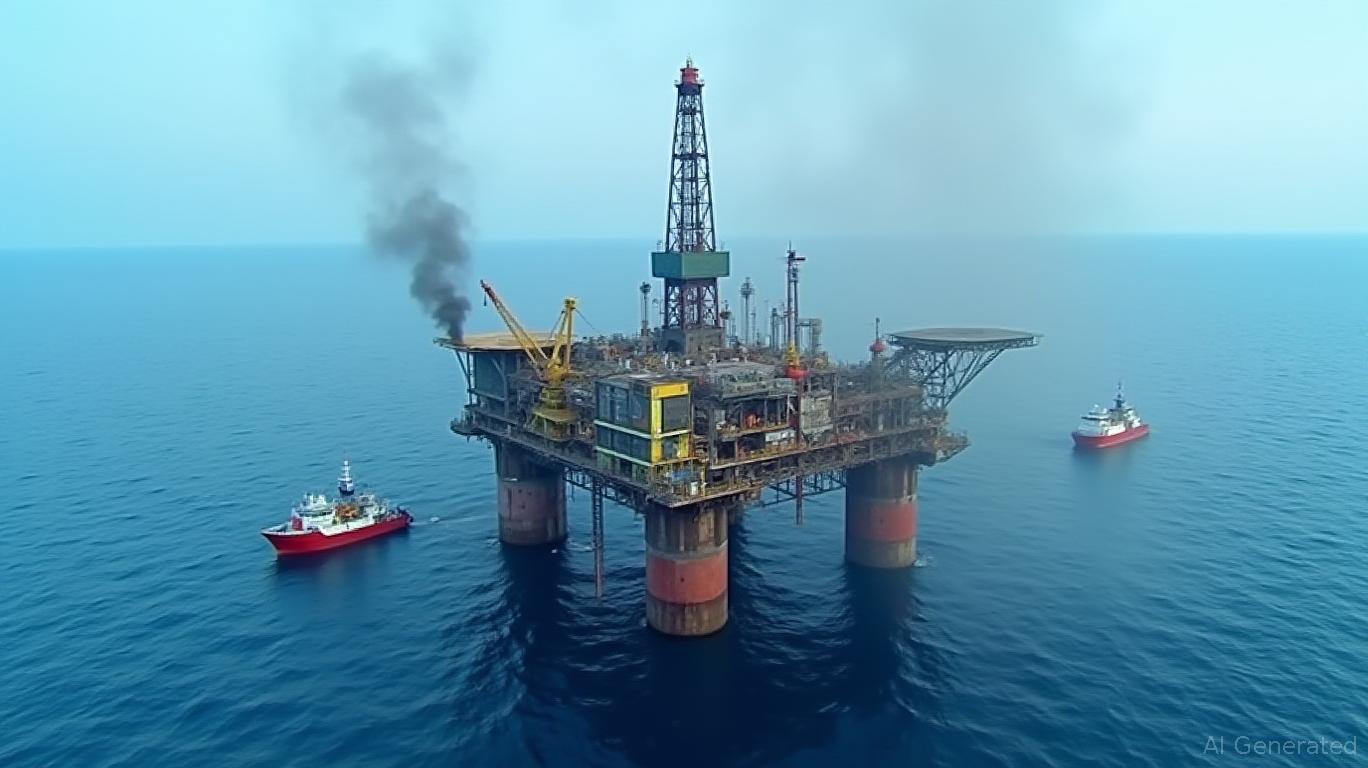BP's Retreat Signals Shift in Energy Strategy: What Exxon and Chevron Must Do Next
The energy sector is in flux, and BP’s recent financial struggles offer a stark warning for its peers. After announcing a £1.5 billion cut to its 2025 share buyback program and posting a 32% year-over-year decline in pretax profit, BP’s shares have plummeted 33% over the past year. This underperformance highlights the challenges of balancing shareholder returns, climate commitments, and volatile oil markets—a dilemma that ExxonMobil and Chevron must navigate carefully.
BP’s Strategic Retreat: A Cautionary Tale
BP’s Q1 2025 results revealed a company in crisis:
- Underlying profit fell 47% to $1.38 billion, missing analyst expectations.
- Net debt rose to $27 billion, up from $23 billion just three months earlier.
- Share buybacks were slashed to £750 million, the lowest end of its guidance range.
The root causes are twofold:
1. Economic headwinds: Lower oil prices and refining margins squeezed margins, while seasonal inventory effects hurt cash flow.
2. Strategic missteps: BP abandoned its ambitious renewables targets (e.g., a 20-fold expansion by 2030), retreating to oil and gas projects to stabilize returns. This pivot was accelerated by activist investors like Elliott Management, now BP’s second-largest shareholder, who pressured the company to prioritize short-term profitability.
Exxon and Chevron: Lessons from BP’s Struggles
While BP falters, Exxon and Chevron have maintained financial discipline, but they face their own risks:
ExxonMobil: The Resilient Giant
Exxon’s 2024 results stand in sharp contrast:
- Net profit of $33.7 billion, fueled by record Permian Basin production and high-margin LNG projects.
- Return on capital employed (ROCE) hit 12.7%, outperforming BP’s 2024 ROCE of just 3.2%.
- $36 billion returned to shareholders via dividends and buybacks, cementing its status as one of the S&P 500’s top cash returners.
Key advantage: Exxon’s focus on high-return hydrocarbon projects (e.g., Guyana oil fields) and cost discipline—cumulative savings of $12.1 billion since 2019—has insulated it from market volatility.
Chevron: Stability Amid Transition
Chevron’s strategy mirrors Exxon’s:
- Prioritizing North American shale and LNG, where it commands strong margins.
- Net debt of $15.3 billion (vs. BP’s $27 billion) reflects better balance sheet management.
- Renewables investments remain cautious, with a focus on partnerships rather than costly standalone projects.
20200101-20241231 -- 20200101-20241231 -- BPBP Exxon MobilXOM
Industry-Wide Shifts: What’s at Stake?
BP’s retreat underscores two critical trends:
1. Hydrocarbons dominate: Even as renewables gain traction, oil and gas remain the primary profit drivers. Exxon and Chevron’s asset portfolios—focused on low-cost, high-margin projects—are a strategic advantage.
2. Investor impatience is rising: BP’s 24% shareholder vote against re-electing its chair signals that investors will penalize firms that sacrifice profitability for climate goals.
For Exxon and Chevron, the path forward is clear:
- Maintain capital discipline: Allocate funds to projects with ROCE >10% and avoid overextending into low-margin renewables.
- Leverage balance sheets: Chevron’s $15 billion net debt and Exxon’s $20 billion cash reserves provide flexibility to outbid rivals in asset acquisitions.
- Engage shareholders: Transparent communication on returns, ESG progress, and long-term strategies will be critical to retaining investor trust.
Conclusion: The Energy Sector’s New Reality
BP’s struggles are a wake-up call. Its 33% stock decline and $27 billion debt load reveal the perils of chasing renewables at the expense of profitability. In contrast, Exxon and Chevron have prioritized shareholder returns and operational efficiency, resulting in combined 2024 earnings of $80 billion versus BP’s paltry $381 million.
The data tells the story:
- Exxon’s ROCE (12.7%) vs. BP’s ROCE (3.2%) in 2024.
- Chevron’s $15.3 billion net debt vs. BP’s $27.0 billion.
- Exxon’s $36 billion shareholder returns vs. BP’s $750 million buyback in Q1 2025.
For investors, the message is clear: Exxon and Chevron remain the energy sector’s bedrock—but they must stay vigilant. As oil prices fluctuate and climate pressures mount, their ability to balance hydrocarbon dominance with measured ESG progress will determine their long-term survival. BP’s decline isn’t just a cautionary tale—it’s a blueprint for avoiding it.



























